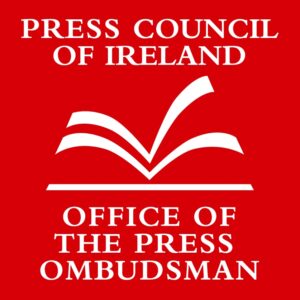Limerick in the 1790s was on the precipice of greatness. Large quays were under construction under the hope that they would herald in a new era of maritime merchants in the city. It seemed that things were really on the up and up. As development in the city continues today, in one form or another, it’s sometimes nice to look back on how far we’ve come to get to where we’re at now.
The triumph that is Georgian Limerick as we know it came into being in the late 1700s. In 1760, Limerick was declared a free city and the majority of walls of the old city were demolished. This paved the way for Pery’s new town and its iconic red brick buildings. It took several decades for this new town to become established as plots were sold to individual developers and the wealthy residents slowly relocated out of the old cramped city.
Despite the hunger to grow and build, tradition was prevalent in the city and was often counterproductive to the innovation at its doorstep – nepotism was the order of the day within the Limerick Corporation of the time.
Eamon O’Flaherty described the city as ‘a corrupt and self-electing political oligarchy’. Although the Catholic Relief Act of 1793 allowed Catholics to become members of corporations, this did not happen in Limerick for another fifty years when the new Corporation was formed in 1841. Even the new development of Newtownpery distanced itself from the Corporation by establishing the Commissioners of St Michael’s Parish in 1807 to oversee this area.
Back in 1792, in the midst of the corrupt Corporation, Robert Briscoe Esq entered the local political sphere when he became a freeman of Limerick city.
Formally, a man could become a freeman of Limerick under one of three criteria. First, by birth, being the first born son of a freeman. Second by being over the age of twenty-one, marrying the daughter of a freeman, and residing in the city. Finally, by serving a seven-year apprenticeship with a freeman of the city.
These rules were not adhered to by the corrupt Corporation who controlled the admittance register. The electorate of the time was made up of freemen. As such, the sitting Corporation could (and often would) tilt the votes in favour of themselves by allowing non-residents of the city to become freemen.
By the time of Briscoe’s addition to the register, non-resident freemen comprised more than half of the electorate in Limerick. Briscoe himself was then a resident of Edwardstown – a townland in Ballysimon, County Limerick, outside the boundary of Limerick city.
He soon took his place on Limerick Corporation. As with all sitting members of the Corporation, nepotism found Briscoe his spot. He was married to Mary Villiers of the Limerick Villiers family. Today the most recognisable of this family was Mary’s grandaunt, Hannah Villiers, who was responsible for the founding of Villiers School and Villiers Alms house. Through his marriage, Briscoe was also related to the Cripps family, who also served on the Corporation.
In 1794, he was elected to the role of sheriff of Limerick alongside Joseph Cripps, his cousin through marriage. Two years later he would take this role again, but this time with Andrew Watson.
Those in the Corporation controlled almost all aspects of Limerick life. Watson was a newspaper man who dictated the local media in the city. He was the editor of the Limerick Chronicle from 1781, after taking over from his father-in-law, the newspaper’s founder John Ferrar.
The names of Briscoe, Cripps, and Watson would make regular positive appearances in the local press. When it came time to elect a mayor, this insular group would dictate who would take the top spot.
In the 1800s, the role and responsibilities of the mayor of Limerick were very different than that of the modern mayor. Although it is far more nuanced than can be described in a short article, Limerick prior to 1841 was, for the most part, self-governing with the mayor acting in the highest position of authority. He dictated everything from street cleaning to executions. He would sit on the magistrates’ bench at trials and even inspect bodies during in inquests.
In October 1804, it was Robert Briscoe’s turn to be Mayor of Limerick.
He held the role for one year, and surprisingly only held it for one term. Watson referred to him in the press as “The Right Worshipful Robert Briscoe, Esq, Mayor”.
While in office Briscoe took a very firm stance on crime in the city from his desk in The Exchange. The Corporation met in The Exchange Building, Nicholas Street, from 1673 until 1846. The Exchange consisted of a covered market on the ground floor and the Corporation rooms on the first floor.
Worth noting, the only remnants of this building today are the single wall of arches into the arcade that now form a boundary wall to St Mary’s Cathedral graveyard.
In March 1805, Briscoe was made aware of five pubs opening illegally on a Sunday. He fined the publicans five pounds each. These fines were spilt, with half going to the informants and half going to the House of Industry (built in 1774 on the North Strand, now Clancy Strand, as a charity to care for the poorest members of society).
At the time, Andrew Watson was treasurer of the House of Industry, so gratefully received the funds from his friend in the Corporation. Watson noted in his newspaper that although fining publicans made Mayor Briscoe less popular with those who fancied a tipple on the Sabbath, it was a boon for the inmates of the House of Industry.
When fines were imposed on persons who assaulted two clerks in the employ of Garryowen brewer John Connell, Briscoe donated a large portion of the fine to the House of Industry. Interestingly, at the end of the same month, Connell would also make a gift to the institution – over six pounds worth of table beer.
John Connell’s son, of the same name, takes his place in history within the lines of the song “Garryowen”.
The House of Industry was also where the fines from the “Englishtown Scavengers” went after they were convicted of neglecting their servants.
Briscoe was also asked to impose a fine on those who left their pigs roam the streets of the city to cause a nuisance, though this was never followed up on. One might conclude that this shows us that pigs and their produce were a major part of Limerick society long before the bacon factories opened.
By July, Briscoe’s contributions to the House of Industry through fines reached almost one hundred pounds. He was known to have “come to a determined and most laudable resolution of clearing the streets of Limerick of the groups of beggars which have long infested it”. This was seen in one of his more barbaric rulings.
On Saturday May 2 1805, Briscoe decided to make an example of two Limerick citizens in an exceedingly demeaning manner. He set out this cruel and unusual punishment after two women – who Andrew Watson fingered as “two notorious prostitutes and pickpockets” – appeared before him.
He declared that the women were to have their heads shaved and be carted through the city. The purpose of which was to show that crime would not be tolerated in Limerick. It was hoped that the scene would cause other sex workers and pickpockets to leave the city or find another form of employment.
In March 1805, Briscoe oversaw a number of inquests, including that of the murder of James Mealy by Thomas and John Shaughnessy.
In April of the same year, the body of another murderer, John Freeze, was removed from the execution site at Gallows Green to the county hospital for dissection by local surgeons. While today that would be illegal and immoral, at the time it was common practice for officials to give the bodies of the executed over to surgeons to practice their anatomy skills. This was also during the period of rampant grave robbing.
The nepotism and kickbacks came in many ways. It’s clear how Briscoe used Watson’s role in the House of Industry to boost his own appearance in the local press. He also received many gifts during his tenure, including expensive white gloves, richly fringed with gold, from one of the sheriffs of Limerick.
Robert Brisco continued as a magistrate after his tenure as mayor ended. He appeared in a handful of high profile cases before his death at his house in Ballycahane in late October 1811. He also had a home in Glentworth Street, where his wife died two years later. He had several children but they never folloewd him into politics locally.
His obituary from the Limerick Chronicle on October 25 1811 unsurprisingly painted him in a favourable light, noting “in his official situation, he deservedly obtained the respect and esteem of his fellow citizens”.
It went on to say that “no one was more universally admired” than Briscoe in his private life. Although it’s doubtful those at the receiving end of his sentences would agree.
Further reading on Robert Briscoe and the corrupt Corporation:
Matthew Potter, First Citizens of the Treaty City, Limerick, 2007.





